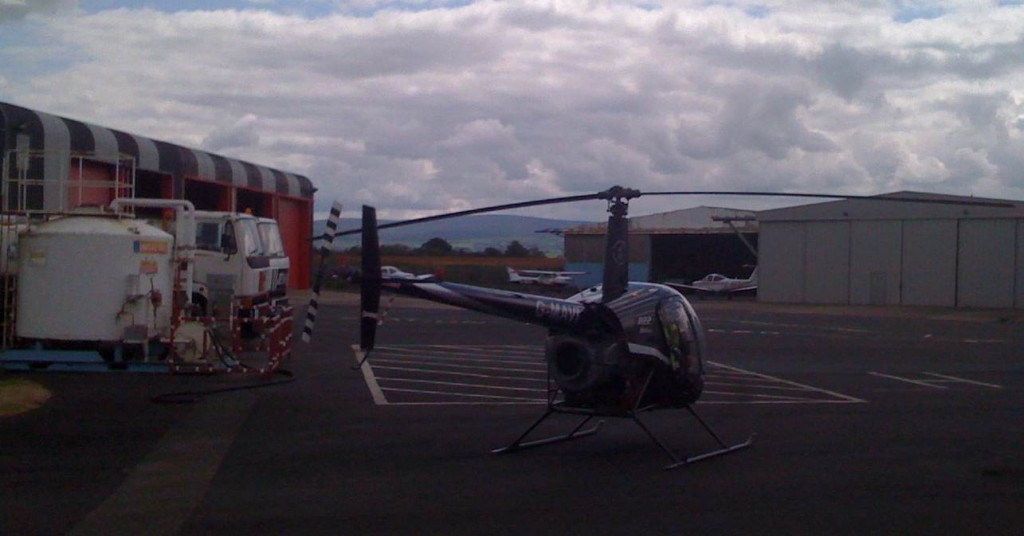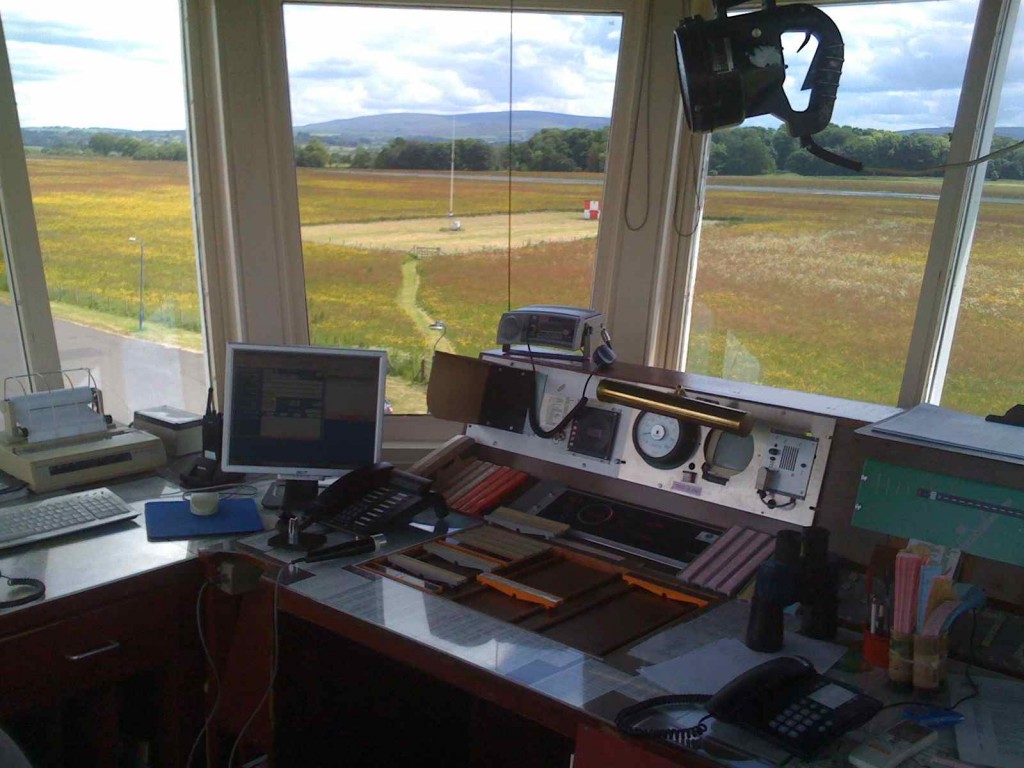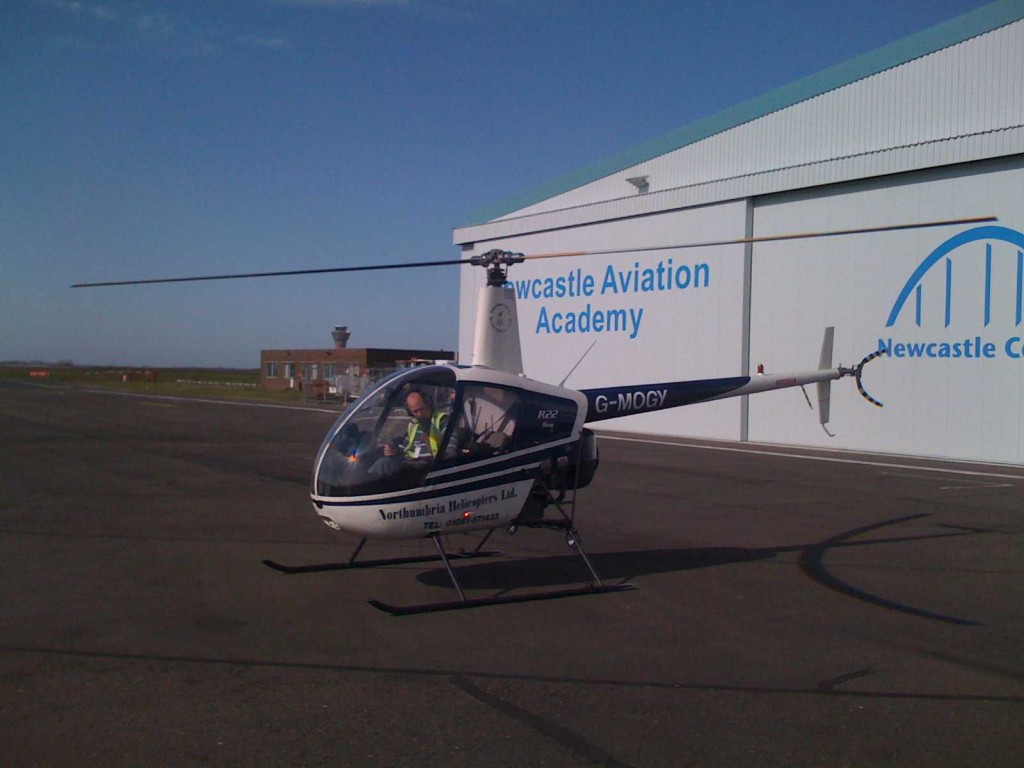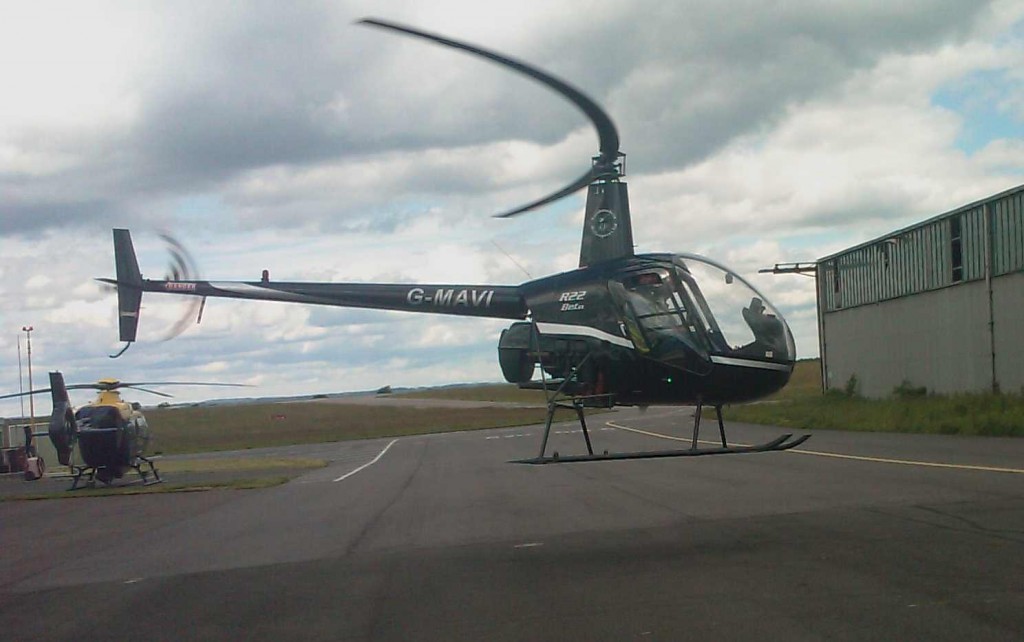Loved this lesson. It was hovering/transitioning/circuits and autorotations, and my favourite, landing/taking off. I did everything bar the autorotations.
So, Steve caught up with Rupert and he had a chat with him about how his cross-country had gone – interesting to listen in on.
I went out to do the checks, start her up, and Steve let me take off, hover taxi along the yellow taxi line cross all the way to a grass triangle (size of a football pitch (I NEED IT THIS BIG !!!)). And then using that as a BIG helipad, we did circuits and they felt much more polished this time, plus as a lovely twist, after each one, I landed and took off. Once I get it on the ground, I always have this huge sigh as I push the collective down as if to say “I’m still alive”, Steve always seems to find this very funny, which in turn makes me laugh. So, we probably did about 5 circuits and they felt really good. With only a minor thing wrong here and there (ie speed, tightness of turns) they went really well. And then we finished off with 3 autorotations. So, the first one, I followed Steve through – I did a circuit, but we end up very high on approach and then Steve did the first one and I followed through. Then the second one, I did it and he monitored the rotor rpm, and then a third ‘cos I didn’t get what he meant by “POP” which is what he says at the very end as he “POPS” the collective to bring the engine back in.
He let me hover taxi back and then he did the “park by the fuel pump” manoeuvre, although I’d loved to have seen the fuel guy’s face if he saw me hover park next to the pumps ![]()
It was then Rupert’s turn again. Whilst he was out, there was a lady in the cafe who was waiting for her son to fly in. He was one of the pilots who was flying a Lynx helicopter in a formation consisting of 2 Lynx and 1 Sea King helicopters. I think I overheard that they had come all the way up from Yeovil (Devon) to Carlisle, NOT ABOVE 200 feet !!! And sure enough, when she pointed them out (flying in), they were at about 200 feet.
Here’s a picture of them getting refuelled (rotor’s stll running and VERY loud).
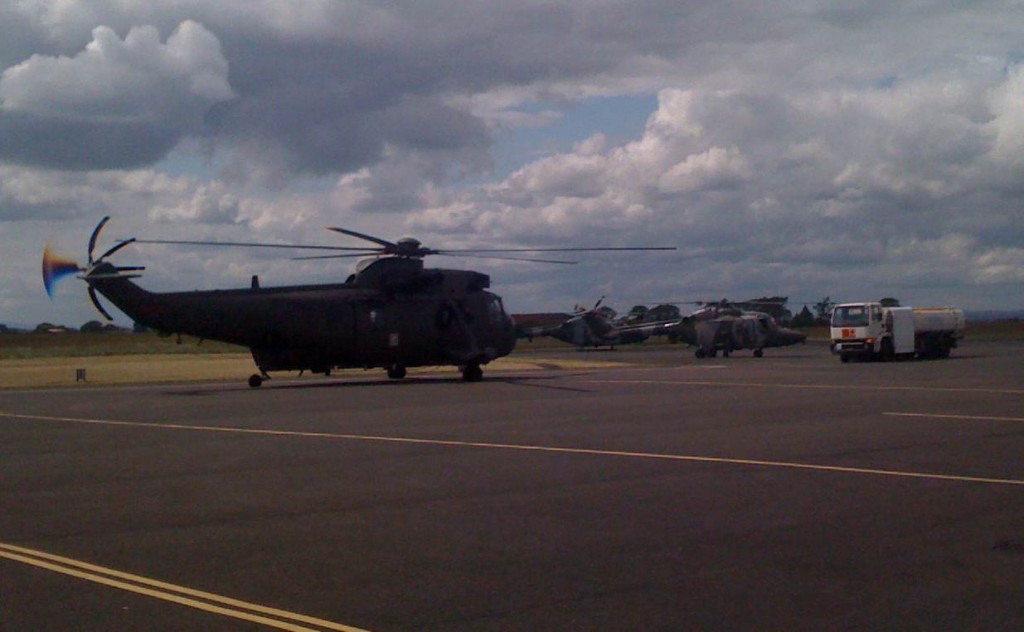
And here’s some video of them taking off beautifully and flying off (in formation).
Once they had gone, Steve and I had a chat along the lines of “You need to get your medical Dave”. That’s a sign that Steve thinks I’m nearly ready to go solo. He mentioned this the other day but I thought he was joking when he said “We’ll have you solo by 10 hours”. I thought he meant in 10 hours time, but I think he meant 10 hours flight time. Yikes !! But, compared to the other day, where I thought he was joking and one screw short of a full bag, when he said it this time, I thought, “Yes, I could do a circuit on my own, and there’s a good chance I can land it”. That felt good !

